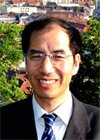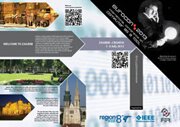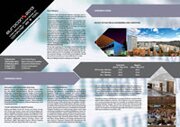Keynote speakers

for Coal and Biomass Fired Power Plants
Abstract
Despite the growing deployment of other energy sources, coal and biomass use is increasing worldwide to meet the rising global demand for electricity. Global fluctuations in coal price and logistic uncertainties in coal supply mean that many power stations are burning a diverse range of coals (indigenous and imported) and the type and quality of coal being fired at any moment is often unknown for various practical reasons. Although biomass can be used to generate energy in different ways, co-firing with coal at existing power stations remains a practical option available to power plant operators, and is widely adopted as one of the main technologies for reducing greenhouse gas emissions from power generation. Biomass originates from a diverse range of sources in a wide variety of forms. In general, biomass has a higher moisture content and higher volatile matter than coal, but its density and calorific value are lower than coal. The inherent differences between biomass and coal and the unknown changes in the type and quality of coals and fluctuations in electricity demand have posed significant challenges to the power generation industry. Measurement and monitoring techniques have an important part to play in tackling the challenges.
This presentation reviews the recent advances in the development and applications of measurement and monitoring techniques to optimize the operation of coal and biomass fired power plants. The techniques that are covered in this presentation include pulverized fuel flow metering, on-line particle sizing, flame imaging, flame stability monitoring, and on-line fuel tracking. Fundamental principles of the measurement and monitoring techniques along with the design and implementation of prototype sensors and instruments will be introduced. Results from recent practical evaluations on industrial-scale combustion test facilities and demonstration trials on full-scale power plants will be reported.
Biography
Yong Yan received his BEng and MSc degrees in instrumentation and control engineering from Tsinghua University, Beijing, China in 1985 and 1988, respectively, and his PhD degree in gas-solids flow measurement from the University of Teesside, UK in 1992. Prof. Yan started his academic career in 1988 as an Assistant Lecturer at Tsinghua University. In 1989 he joined the University of Teesside as a Research Assistant. After a short period of postdoctoral research, he worked as a lecturer at Teesside during 1993-1996, and then as a senior lecturer, reader and professor, respectively, with the University of Greenwich, UK during 1996-2004. He joined the University of Kent in 2004 as a Professor of Electronic Instrumentation and the Head of Instrumentation, Control and Embedded Systems Research Group. He has been Director of Research of the School of Engineering and Digital Arts since 2008. He has published in excess of 270 research papers in refereed journals and conference proceedings in addition to 12 research monographs. He is a member of the Innovation Metrology R&D Working Group and the Engineering and Flow Working Group of the UK Government. He has held the positions of Kuang-Piu Guest Professor at Zhejiang University since 2004 and Yangtze Scholar Professor at Tianjin University since 2005. In recognition of his contributions to pulverised fuel flow metering and flame imaging, Prof. Yan was named an IEEE Fellow in 2011. He is the first IEEE Fellow in the UK in the field of instrumentation and measurement. He was awarded the Achievement Medal by the IEE in 2003 and the Engineering Innovation Prize by the IET in 2006 and the Rushlight Commendation Award in 2009. He has been teaching electronic instrumentation and related modules at both undergraduate and postgraduate levels for 20 years. His contribution in engineering education was recognized by a national award from the Royal Academy of Engineering in 2007.
His main areas of expertise are in Sensors, Instrumentation, Measurement, Condition monitoring, Digital Signal Processing, Digital Image Processing and Applications of Artificial Intelligence.






